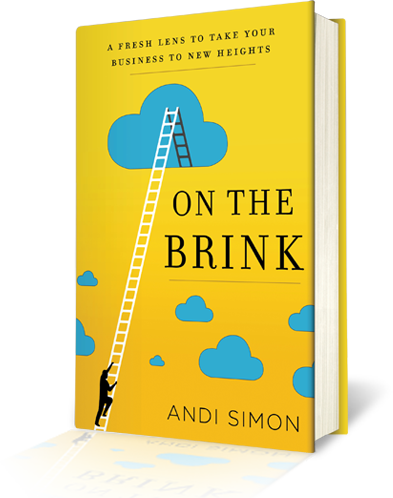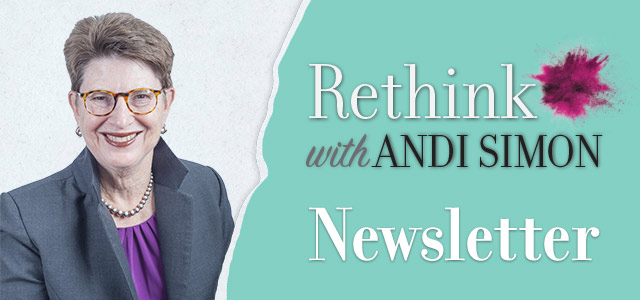Humans naturally resist change, but progress demands we lean into it. In this article, I explore how AI and Blue Ocean Strategy® are opening new market spaces by enhancing, not replacing, human expertise. From diagnostics to surgical scheduling, these real-world examples reveal how smart collaboration between people and technology drives innovation.
Introduction
The strongest lesson I have learned as an anthropologist is this: Humans hate to change. Our brains are designed to protect us from the unknown and uncomfortable, high jacking new ideas and sending us scrambling back to the security of old habits. While I doubt any of these folks thought they were swimming in Blue Oceans, much less using a Blue Ocean Strategy, their stories are important for how they took something new and turned it into a new market space. Blue Ocean Innovation is about creating ew solutions, value innovation, not just incremental improvement. They don’t have to disrupt what is already in place. These cases illustrate how you can create new solutions that expand what is already in place, not destroying it. Rather, they are enhancing the already existing systems in major new ways.
Blue Oceans in the New AI World
But AI and the Fourth Industrial Revolution (4IR) have arrived, with a set of emergent technologies quickly changing the way we live, work and relate to one another. We could react in one of two ways: by dwelling on the fear — what if it doesn’t work out? — or lean into the opportunities by trying, piloting and measuring how this actually makes our processes/products/people better.
More and more organizations are taking the latter course. Rather than the flight from AI and other emerging tech, they are embracing it as students, adjusting on their own how to solve those problems in new ways. They’re also learning how to measure results, compare them to other workflows and adjust on the fly to get the ideal mix of human intervention and automation. This is not new. We’ve always had to evaluate and make choices.
The question for you as a business leader, a doctor, an academic, or just a new person in a business that is ready for change: how do you begin, and create the future of your business — as well as yourself.
Four Case Studies: Blue Oceans Create New Markets
Here are four examples of where AI has taken what’s already being done to another level — with varying types of success, but, often, with better results in healthcare delivery–from diagnosis to detection.
AI Screening for Diabetic Retinopathy
In both India and Thailand, Google’s AI-based retinal screening technology (ARDA) is detecting early signs of diabetic eye disease. In their cross-sectional analysis of the clinical performance of ARDA, sensitivity and specificity for severe NPDR and PDR were greater than 96% and captured all patients with severe NPDR and PDR for referral to an ophthalmologist. This initial large scale post-marketing report on performance of ARDA conducted from 600,000 patients in India emphasizes the need for monitoring and publication an algorithm’s clinical performance as advocated by regulating authorities. Grabbing the condition sooner, clinics head off preventable blindness and open access in underserved areas. Doctors have more time to treat, and AI leads an initial screening. (https://pmc.ncbi.nlm.nih.gov/articles/PMC11923701/?utm_source=chatgpt.com)
Early Sepsis Detection with AI TREWS (Targeted Real-time Early Warning System)
Created by Johns Hopkins, AI TREWS constantly processes patient information in electronic health records to issue targeted early warnings. By overlaying a patient’s medical history with their current symptoms and lab results, the machine-learning system can alert doctors when someone is in danger of developing sepsis and recommend treatment plans (like beginning antibiotics). By detecting sepsis a matter of hours earlier than standard alerts, hospitals had cut their mortality indicators by up to 20%. In critical care, those hours can make the difference between life and death. ( Read more: https://www.hopkinsmedicine.org/news/articles/2022/09/study-shows-johns-hopkins-ai-system-catches-sepsis-sooner)
AI in Radiology as a Second Reader
Radiologists who used AI as a “second reader” in multi-center trials enhanced accuracy when diagnosing chest X-rays. The software minimizes misdiagnosis and ensures consistency in high volume imaging settings. But nothing is easy. When you are anxious that your work will be done by AI, just consider the skills required to diagnose an x-x-ray on a patient when artificial intelligence and radiologists must sync up their abilities to get it right.
The researchers found that AI is no replacement for human expertise. Effective clinician–AI algorithm collaboration is critical for AI-based medical image interpretation. While previous work showed that AI assistance has the potential to enhance clinician performance on average, it is not known what its impact will be on the individual clinicians. This study conducted a large-scale investigation of the individual and heterogeneous effects of AI assistance on 140 radiologists in 15 chest X-ray diagnostic tasks, and identified predictors for those effects. Paradoxically, typical based experience factors as years of experience, subspecialty or familiarity with AI tools do not predict the effect of AI help. This comparison also revealed that better radiologists benefit less from the AI advice than worse-performing radiologists, which contradicts assumed beliefs. Their results demonstrate the necessity of bespoke clinician–AI collaboration and the robustness of AI models. Through such understanding of factors that contribute to AI assistance being effective, this paper contributed important guidance for focused implementation of AI that maximises benefits accrued to individual clinicians in clinical practice. (Read more: https://www.nature.com/articles/s41591-024-02850-w?utm_source=chatgpt.com)
Smarter Operating Room Scheduling
TAMPA GENERAL HOSPITAL (TGH): AI enhances OR scheduling The technology enables Tampa General to better manage its operating room (OR) schedules by learning case durations for each surgeon, which in turn decreases patient delays, simplifies case flow and lowers costs. With the aim of reducing time spent on such hold-ups, Tampa General set a summer 2024 go-live date for a new surgical operations system in 28 of its 52 operating rooms (ORs). The system is powered by cameras and AI to bring surgical teams real-time data that they can use to accurately forecast schedule-related metrics, such as case durations and turnover times. Hospitals become more efficient, surgeons are more predictable, and patients get care sooner.
Why AI Matters in Healthcare Delivery?
I spent seven years in healthcare as an executive. We learned early on that flow is critical to managing the volume of people arriving in the emergency department on any given day. The speed with which procedures were conducted impacted everything, from patient satisfaction to financial viability. These are powerful new ways to manage the flow, care for patients, and deliver the critical services expected of a healthcare system.
The lesson that’s emerging is clear: when AI is added into workflows —not appended as an afterthought— it has the potential to drive real business results. Healthcare providers improve patient care. Manufacturers reduce downtime and costs. They are an attitude, a habit of mind that can be adopted or rejected, a way of seeing and not just doing. • Adapt to constant change • See AI as a collaborator, not a competitor • Cultivate a “beginner’s mind • Encourage collaboration
To leaders, the question is not whether AI works — but how to strategically deploy it. AI done right doesn’t replace people, it augments them. And these examples suggest transformation is already coming from augmentation.
Think big and bold. William Gibson’s was right: “The future is already here — it’s just not evenly distributed.”
You might also enjoy our white paper: https://www.simonassociates.net/wp-content/uploads/2023/11/White-paper-10-Ways-To-Avoid-Red-Oceans.pdf
- Check out our blog with our podcasts at www.SimonAssociates.net/podcast
- Subscribe on Apple, Spotify, or your favorite platform
- Listen to the episodes that speak to you
- Review us — your feedback helps us grow
- Share with a friend or colleague who’s ready to think differently
- And read our book, ““On the Brink: A fresh lens to take your business to new heights.”
We’re just getting started. Thank you for being part of this incredible journey.
Here’s to seeing, feeling, and thinking in bold, new ways — together.
#OnTheBrink #PodcastForChange #SeeFeelThink #WomenInBusiness #InnovationLeadership




